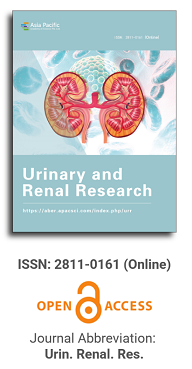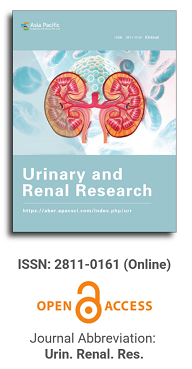
Asia Pacific Academy of Science Pte. Ltd. (APACSCI) specializes in international journal publishing. APACSCI adopts the open access publishing model and provides an important communication bridge for academic groups whose interest fields include engineering, technology, medicine, computer, mathematics, agriculture and forestry, and environment.
|
|
||
About This Journal
Focus and ScopeUrinary and Renal Research (URR) is an open access journal, which provides a forum for studies in the field of urinary and renal. The submitted manuscript will go through a rigorous double blind peer-reviewed process. Urinary and Renal Research aims to respond and adapt to the newest developments in scholarly publishing and at the same time, addresses highly relevant scientific and societal topics. This journal makes research outputs publicly available and allows for different types of articles including original research articles, review articles, book reviews, editorials, commentaries, case report, etc. The journal will specifically address the following topics but not limited to: Prostate enlargement, kidney stones, urinary incontinence, and urinary tract infections. For Authors
Article Processing Charges (APCs)APACSCI's publishing model is open access. Open access enables readers to freely access and download articles immediately after publication online. APACSCI charges authors article processing charges (APCs) so as to cover operation costs, such as those arising from the evaluation and production processes. APCs should be paid upon the acceptance of articles and ahead of publication. APCs of Urinary and Renal Research are US$800. Waiver and Discount Policy APACSCI believes there should be no barriers to the dissemination of knowledge, and thus APACSCI offers APC waivers and discounts to authors from low-income countries and authors with special circumstances. Authors should write to the editorial office of the specific journal to apply for waivers and discounts. The decision to approve such applications is made by the editorial office on a case-by-case basis. Publishing fees or waiver status should not influence editorial decision making. APC PaymentPayments for APC of this journal can be made through our online PayPal payment gateway. Enter the article no. into the below textbox and select "Pay Now" to proceed with payment. *Article No. is mandatory for payment and it can be found on the acceptance letter issued by the Editorial Office. Payment without indicating Article No. will result in processing problem and delay in article processing. Please note that payments will be processed in USD. You can make payment through Masters, Visa or UnionPay card. |
.png)
Prof. Wei-Yen Hsu
National Chung Cheng University, Taiwan



 Open Access
Open Access